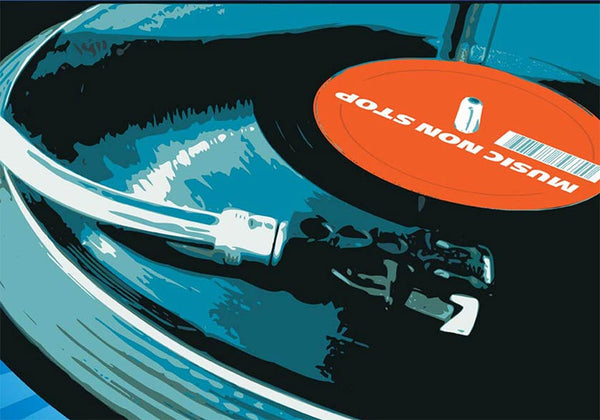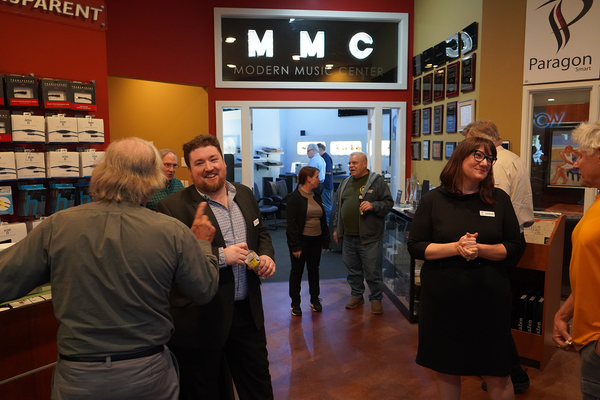
For The Love of Vinyl: Vinyl Revival
“The reports of my death are greatly exaggerated.” -Mark Twain
In April of 2016, Fortune reported that vinyl sales were at a 28 year high. Globally, between 2013 and 2014, the vinyl market increased in value 54.79%, from $224.2 million to $346.8 million dollars. While these numbers still represent a fairly small portion of the global recording industry, the vinyl resurgence from the lowest point of $3 million in 2006, is staggering.
But where did vinyl go? And was it ever really gone?
You’re probably familiar with a lot of the conventional wisdom about the death of LPs. It’s popularly accepted that digital music, and compact discs in particular, pushed records off the scene in the early 80’s, cutting industry revenue by more than half between 1981 and 1989.
No one disputes that vinyl sounds better than early CDs. The vinyl sound is warmer and considered by some to be much more listenable. Many people found CD sound quality to be screechy, and the mastering left much to be desired. Digital quality got better, however, and the “Perfect Sound Forever” of the compact disc won increasing favor over vinyl, which was physically more delicate and susceptible to wear. By the early to mid-90’s, it seemed that vinyl was facing a dying fall.
“A break is where the song takes a breather...drops down...then comes storming back again. It’s a bit like a fake ending.” -Frank Broughton & Bill Brewster, How to DJ Right: The Art and Science of Playing Records
 Photo Courtesy of Grandmasterflash.com
Photo Courtesy of Grandmasterflash.com
In the 70's and 80's, a revolution was occurring in music, coming off the heels of Disco. In New York, a "Holy Trinity" of mixmasters (Afrika Bambaataa, Grandmaster Flash, and DJ Kool Herc) were doing things with music that had never been done before, and vinyl was at the core. Eschewing the taboo, Flash and others began to interact physically with vinyl, combining the record, the turntable, and the recorded music together to create a whole new sound. Flash says of this time, "I was the first DJ to make the turntable an instrument." Breaks, drops, breakbeats, and sampling were all born out of this era.
Without the contributions of these DJs, vinyl might have suffered even more once digital music came onto the scene, and LP albums sales did take a massive tumble in the late 80's. Vinyl singles, however, kept the medium afloat financially. DJs were still spinning, and radio stations were still using 12" singles. In addition, the 90's era ushered in Hip Hop music and culture, which was a direct descendant of the music of the mixmasters from the 70's. Vinyl was still valued and revered for its ability to let musicians physically interact with the sound. Other genres, such as Punk, Garage Rock, and their many offshoots also shunned digitization, seeing it as commercialized assimilation to be rebelled against. All of these musical movements did their part to keep records afloat during the lean years. In other words, vinyl never died. It dropped down and took a breather, only to come storming back with a vinyl revival starting in the mid 2000's.
"Don't call it a comeback, I've been here for years." - LL Cool J, Mama Said Knock You Out
So what happened between the mid-2000’s and present day to start rebounding the numbers so quickly? In large part, we have audiophiles to thank for demanding the continued production, remastering, and re-pressing of quality vinyl albums. Although digital music continues to improve, many prefer analog sound for its special, inimitable voice. Music lovers want to feel as close to the music as possible, and vinyl fosters that relationship. Some musicians also began to push back, returning to recording techniques that relied on older, analog equipment. Think Jack White's 2003 album Elephant, recorded solely on analog equipment that predated 1963 (with a disclosure to the effect in the liner notes).
Audiophiles have become increasingly vocal about the benefits of listening to records in alleviating the stress of hectic lifestyles. Playing a vinyl record forces us to slow down, listen more deliberately, and interact with the music. From selecting the album, to placing it on the turntable, queuing the needle, and flipping it to the next side, listening to records is a tactile and grounding experience.
LPs are also being normalized by influential voices and pop culture. Records are being sold in stores that are geared to a younger demographic. Independent record stores have reappeared. In 2014, Jack White and Neil Young pressed a record on The Jimmy Fallon Show. Nostalgia for analog gear is back in full force with McIntosh turntables and gear making appearances on television shows like Marc Maron’s FX series, Maron and USA Network's Mr. Robot. The cult classic movie High Fidelity was a virtual love letter to vinyl collectors. Rapper Nas recently brought us the Netflix series, The Get Down, which underscores the importance of records in the 70's and 80's.
Vinyl is out there, and it is visible!



